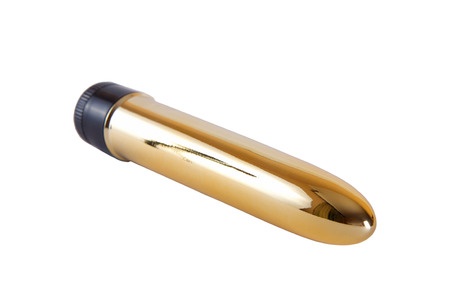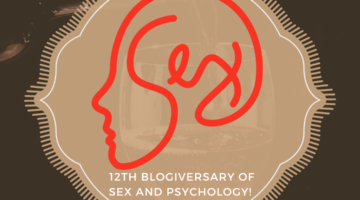A Brief History Of The Vibrator
May 1, 2015 by Justin Lehmiller
**Note: This post is sponsored by MaxiWand, authorized retailer of one of the world’s most popular vibrators, the Magic Wand Original

9/18/2018 Editor’s Note and Disclaimer: This 2015 blog post was based largely on claims made in the book The Technology of Orgasm by Rachel Maines. Many of the claims made in this book were called into question in 2018 in a paper published in the Journal of Positive Sexuality, which I blogged about here.
If you have ever been to a sex shop (or browsed one online), you have probably noticed that vibrators come in all different sizes, shapes, and colors. In addition, you may have noticed that some are designed to stimulate different parts of the genitals, and that some are designed to be used by individuals and others by couples. Such incredible diversity in sex toys wasn’t always the case, though. The vibrator has evolved significantly over time in terms of its appearance, purpose, and intended audience. In this article, we will take a look at the fascinating and “hysterical” history of what is perhaps the world’s most popular sex toy: the vibrator.
Believe it or not, vibrators were first popularized as a therapeutic device that doctors would use on female patients with hysteria. At one point in time, hysteria was among the more common medical disorders diagnosed in women, although it has long since been debunked as a bogus condition. Hysteria included symptoms ranging from nervousness and insomnia, to loss of appetite for sex with one’s husband, to a “tendency to cause trouble for others” [1]. The list of symptoms was so extensive and overly broad that virtually any woman who visited her physician with any type of medical complaint could be diagnosed as hysterical. Although hysteria was originally thought to be the result of a woman’s uterus “wandering” throughout her body, later physicians viewed it as resulting from inadequate or insufficient sex.
For many years, the primary treatment for hysteria was a “pelvic massage” culminating in “hysterical paroxysm,” which was really just another way of saying orgasm [1]. These “massages” were usually performed by doctors, who made a lot of money off of them because hysteria was so prevalent and necessitated frequent treatments. All these doctors were actually doing, though, was giving these women the orgasms that their husbands were not, while letting the husbands pay for it!
With doctors performing all of these massages by hand and so many patients lining up for them, administering these “treatments” became quite time consuming. Indeed, it can take a while for some women to reach orgasm (even with competent stimulation, it is not uncommon to take up to 20 minutes or longer). Consequently, the first vibrator was invented in order to reduce the length of office visits, which permitted doctors to offer their remedy to even more patients.
As you might imagine, a personal vibrator would save a lot of money on physician visits and could be used at home any time. Therefore, once electricity became widely available in people’s homes, demand for vibrators skyrocketed. In fact, there was enough demand that the vibrator reportedly became just the fifth electric device approved for home use after the sewing machine, fan, teakettle, and toaster [1]. This means that the vibrator made its way into the home long before the vacuum cleaner, electric iron, and television.
One thing I should point out is that early vibrators did not look much like the vibrators you see on the shelves today, which can take the form of everything from a very life-like penis to a pointy and ribbed alien-looking probe. Until recently, most vibrators were designed and sold as personal massage devices in order to skirt obscenity laws (on a side note, it is actually still illegal to sell sex toys in some parts of the United States today!). One of the most popular such vibrators was the Hitachi Magic Wand (now known as the Magic Wand Original), first introduced in 1968. Although this device was officially marketed as a tool for tension reduction and relaxation, it has been used as a vibrator for nearly a half century by countless women.
While far more options are available today, the Magic Wand is still one of the most sought-after vibrators (you can find it here in the US or here in the UK) because it comes highly recommended from many sex educators and therapists and because many women prefer its discreet appearance (i.e., some people prefer to have a sex toy that doesn’t look like a sex toy). Some people also like the Magic Wand because of its versatility—with the addition of some aftermarket attachments, it can provide all sorts of stimulation.
The vibrator continues to evolve. Indeed, some of the latest developments include vibrators that are self-lubricating, remote-controlled, gold-plated, and/or that can be programmed to vibrate in synch with your favorite songs. I can only imagine what the vibrators of the future will be able to do…
Want to learn more about Sex and Psychology ? Click here for previous articles or follow the blog on Facebook (facebook.com/psychologyofsex), Twitter (@JustinLehmiller), or Reddit (reddit.com/r/psychologyofsex) to receive updates.
[1] Maines, R. P. (1998). The Technology of Orgasm: “Hysteria”, the Vibrator, and Women’s Sexual Satisfaction. Baltimore, MD: The Johns Hopkins University Press.
Image Source: 123RF
You Might Also Like:
- Sex Question Friday: Can A Woman Become Sexually Dependent On Her Vibrator?
- Sex Question Friday: Is It Normal For Guys To Use Vibrators?

Dr. Justin Lehmiller
Founder & Owner of Sex and PsychologyDr. Justin Lehmiller is a social psychologist and Research Fellow at The Kinsey Institute. He runs the Sex and Psychology blog and podcast and is author of the popular book Tell Me What You Want. Dr. Lehmiller is an award-winning educator, and a prolific researcher who has published more than 50 academic works.
Read full bio >

